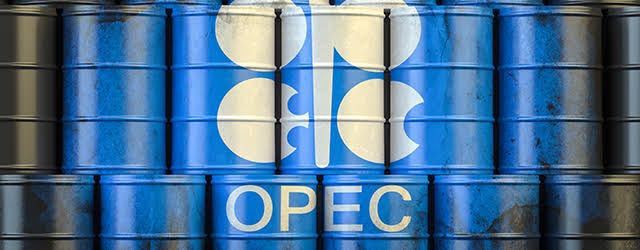The Organization of Petroleum Exporting Countries (OPEC) has launched its Annual Statistical Bulletin (ASB) for 2021. OPEC Secretary-General Mohammad Sanusi Barkindo, Professor Thomas Lindner of the Executive Academy at the Vienna University of Economics and Business, and members of the Secretariat’s management attended the event.
To download the ASB 2021, CLICK HERE
Some of the Bulletin’s highlights include:
- Total world crude oil production declined in 2020 by 6.15 million barrels per day (mb/d), or 8.2 per cent, as compared to 2019, to average 69.09 mb/d, marking a historical year-on-year drop notably after the outbreak of the COVID-19 pandemic. OPEC crude oil production declined sharply year-on-year by 3.72 mb/d, or 12.7 per cent, while crude production by non-OPEC countries fell by 2.43 mb/d, or 5.3 per cent.
- With an average of 90.73 mb/d in 2020, world oil demand was heavily impacted by the COVID-19 pandemic and fell by a historic 9.30 mb/d y-o-y. OECD oil demand fell sharply in 2020, while in the non-OECD it declined for the first year in history. Oil demand in OPEC Member Countries was sluggish in 2020, losing 8.2 per cent y-o-y. Distillates and gasoline accounted for around 55.1 per cent of 2020 world oil demand with a steep downward trend, amid COVID-19 containment measures. Residual fuel oil requirements were about 7.1 per cent of total oil demand in 2020.
- OPEC Member Countries exported an average of 19.70 mb/d of crude oil in 2020, a sharp decrease of about 2.78 mb/d, or 12.4 per cent, compared to 2019 and marking the fourth consecutive annual decline. Following the pattern in previous years, the bulk of crude oil from OPEC Member Countries – 14.43 mb/d or 73.2 per cent – was exported to Asia, particularly China and India. Considerable volumes of crude oil – about 3.13 mb/d – were also exported to OECD Europe in 2020, which, however, represents a decline compared with 3.74 mb/d recorded in 2019. OECD Americas imported 0.84 mb/d of crude oil from OPEC Member Countries, which was about 0.38 mb/d, or 31.1 per cent, less than the 2019 volumes.
- Exports of petroleum products from OPEC Member Countries averaged 3.48 mb/d during 2020, down by around 0.40 mb/d, or 10.4 per cent, compared to 2019. Imports of petroleum products by OPEC Member Countries averaged at 1.52 mb/d in 2020, roughly 0.17 mb/d, or 9.8 per cent, lower than in 2019.
- World proven crude oil reserves stood at 1,549 billion barrels at the end of 2020, increasing by 0.2 per cent from the level of 1,546 billion barrels recorded at the end of 2019. Proven crude oil reserves in OPEC Member Countries increased by 0.3 per cent to 1,237 billion barrels at the end of 2020, following a firm increase during 2019.
- At the end of 2020, world proven natural gas reserves fell by 0.4 per cent to approximately 206.7 trillion standard cubic metres (cu m). Proven natural gas reserves in OPEC Member Countries stood at 73.74 tr standard cu m at the end of 2020, down 1.4 per cent from the level at the end of 2019.
- World refinery capacity shrank by 0.3 m barrels/calendar day (b/cd) to stand at 101.1 m b/cd during 2020. The non-OECD region, particularly China, other Asia and the Middle East, recorded refining capacity additions. Refinery capacity in the OECD declined sharply in 2020, as compared to 2019. Globally, refinery throughput fell by a historic 9.1 per cent to reach 78.0 mb/d in 2020, amid bearish oil demand during the COVID-19 pandemic.
- The OPEC Reference Basket averaged $41.47/b in nominal terms during 2020, down from $64.04/b in 2019, a strong decrease of $22.57/b, or 35.2 per cent. The volatility level was $12.55/b, or 30.3 per cent, relative to the yearly average.
To read the press release from OPEC, CLICK HERE



